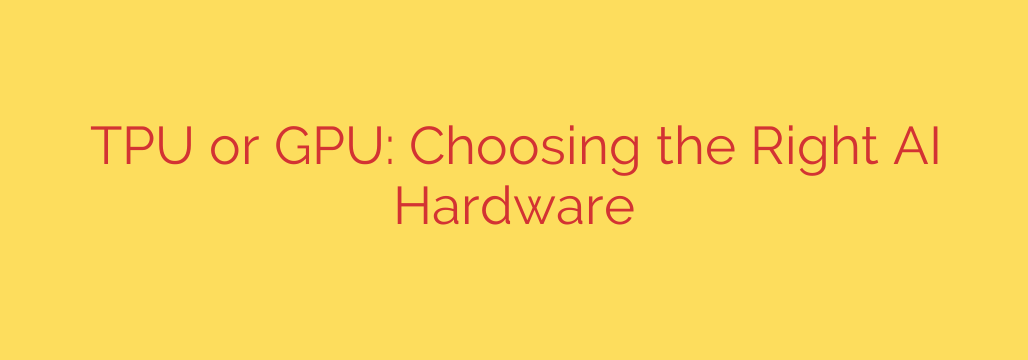
Choosing the right hardware is critical for anyone working with Artificial Intelligence. The two main contenders you’ll encounter are GPUs and TPUs. While both are designed to handle the heavy computational loads required by AI models, they have key differences that make one potentially better suited than the other depending on your specific needs.
GPUs (Graphics Processing Units) were originally created to render graphics for video games and other visual applications. Their architecture, which involves thousands of smaller cores working in parallel, turned out to be perfectly suited for the matrix multiplications and parallel processing fundamental to many AI tasks, especially deep learning. GPUs are highly versatile. They can handle a wide range of AI workloads, from training complex neural networks to running inference on deployed models. They also support a vast ecosystem of programming frameworks and libraries, making them a flexible choice for many researchers and developers.
TPUs (Tensor Processing Units), on the other hand, are Application-Specific Integrated Circuits (ASICs) developed specifically for machine learning workloads. Unlike the general-purpose design of GPUs, TPUs are optimized from the ground up to perform the high-volume, low-precision calculations characteristic of neural network operations (specifically, tensor computations). This specialization allows TPUs to achieve very high performance and energy efficiency for specific types of AI tasks, particularly inference and large-scale training on certain model architectures. Because they are specialized, TPUs may be less flexible for tasks outside of their core optimization areas compared to GPUs.
So, how do you decide?
Consider your primary use case. If you need maximum flexibility to work with various AI models, research different algorithms, or handle tasks beyond just AI, a GPU is often the more versatile and widely supported option. Its broad compatibility with different frameworks and established ecosystem make it a safe and powerful choice.
If your focus is on deploying existing models for high-speed, energy-efficient inference or performing large-scale training on compatible model types where performance-per-watt or performance-per-dollar is paramount, a TPU could offer significant advantages due to its specialized design. TPUs excel when running consistent, predictable workloads that fit their optimized architecture.
Ultimately, the choice between a GPU and a TPU depends on balancing factors like performance requirements, budget, energy consumption, flexibility, and the specific AI models and tasks you plan to undertake. Understanding the strengths of each type of hardware will help you make the most informed decision for your AI initiatives.
Source: https://www.horizoniq.com/blog/tpu-vs-gpu/








